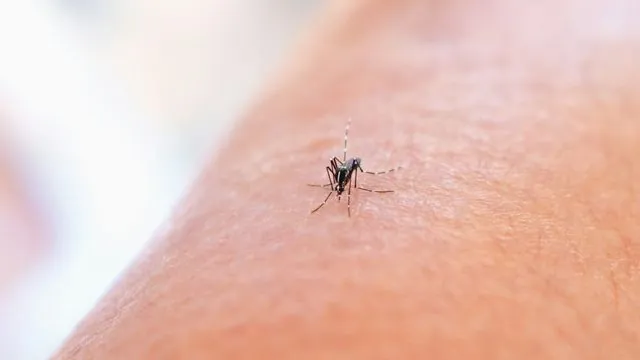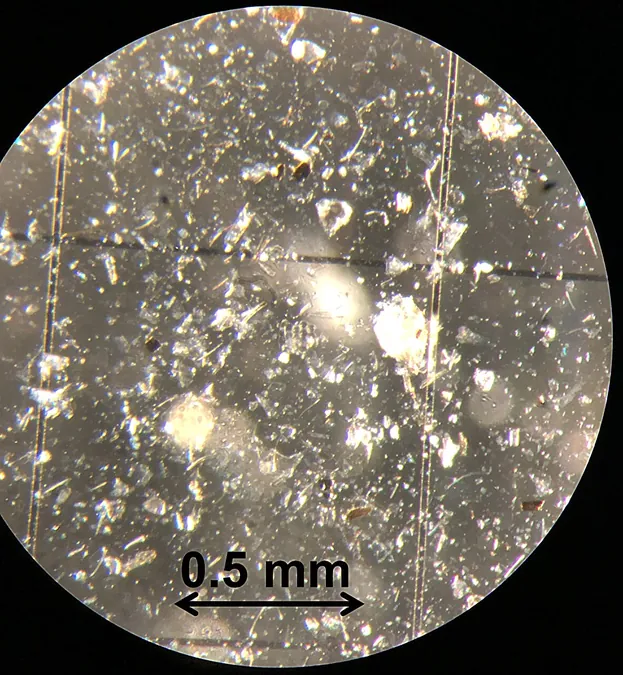
Revolution in Malaria Detection: Paper-Based Devices Are Changing the Game
2025-06-17
Author: Wei
A Breakthrough in Malaria Diagnostics
In an astonishing leap forward for malaria detection, inexpensive paper-based devices have outshone traditional testing methods, identifying malaria in asymptomatic individuals better than ever before. This groundbreaking discovery, conducted in Ghana, is heralded as a pivotal moment in the fight to eliminate this deadly disease.
How It Works: Simple Yet Sophisticated
These seemingly simple devices rely on the chemistry of a blood sample interacting with embedded molecules on paper layers. With the help of advanced yet compact instrumentation, diagnostic results are achieved through mass spectrometry that identifies malaria-specific antigens, triggering a response in the immune system.
Bringing Laboratories to the People
"Instead of bringing samples to a lab, we are bringing the lab to the sample," stated Abraham Badu-Tawiah, the lead researcher and chemistry professor at The Ohio State University. This innovation allows quick and accurate testing in some of the most remote areas of Africa, enhancing access to crucial healthcare.
Impressively Accurate Results
With a remarkable 90% accuracy rate—comparable to PCR tests—this new method promises timely diagnosis for those who need it most. Detailed research published in *Analytical Chemistry* highlights its efficacy in identifying malaria, an ailment that plagued almost 249 million people globally in 2022, claiming around 608,000 lives.
Historical Context and Future Prospects
Badu-Tawiah's invention dates back to 2016, originally designed for remote testing. Throughout the years, his team has made significant improvements, including a 3D automation process that stabilizes biological samples for months, ensuring reliable testing conditions.
Testing Challenges and Triumphs
In a field study involving 266 volunteers in Ghana, the paper-based devices were put to the test against established methods. Results revealed a stark contrast: while microscopy only detected 24 positives, the paper devices uncovered 184, showcasing their superior sensitivity.
The Potential for Broader Applications
Moving forward, Badu-Tawiah is in discussions with Ghanaian authorities about implementing this testing method across the country. Excitingly, he’s also exploring the possibility of adapting the devices for a range of other health conditions, including colorectal cancer and acute pancreatitis.
A Bright Future Ahead
This innovation is not just about tackling malaria; it's a glimpse into the future where healthcare is accessible, efficient, and capable of responding to emerging public health crises. As Badu-Tawiah aptly puts it, "I have the hammer now, and I could hit different nails." The world may be on the brink of a diagnostic revolution.

 Brasil (PT)
Brasil (PT)
 Canada (EN)
Canada (EN)
 Chile (ES)
Chile (ES)
 Česko (CS)
Česko (CS)
 대한민국 (KO)
대한민국 (KO)
 España (ES)
España (ES)
 France (FR)
France (FR)
 Hong Kong (EN)
Hong Kong (EN)
 Italia (IT)
Italia (IT)
 日本 (JA)
日本 (JA)
 Magyarország (HU)
Magyarország (HU)
 Norge (NO)
Norge (NO)
 Polska (PL)
Polska (PL)
 Schweiz (DE)
Schweiz (DE)
 Singapore (EN)
Singapore (EN)
 Sverige (SV)
Sverige (SV)
 Suomi (FI)
Suomi (FI)
 Türkiye (TR)
Türkiye (TR)
 الإمارات العربية المتحدة (AR)
الإمارات العربية المتحدة (AR)